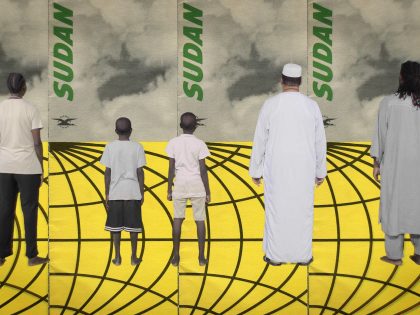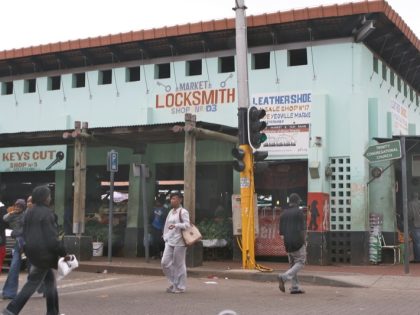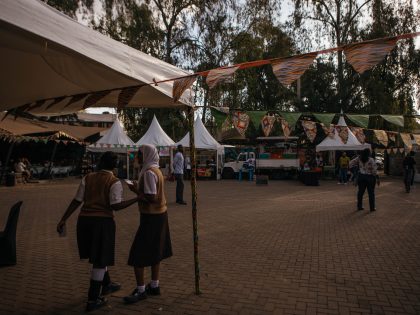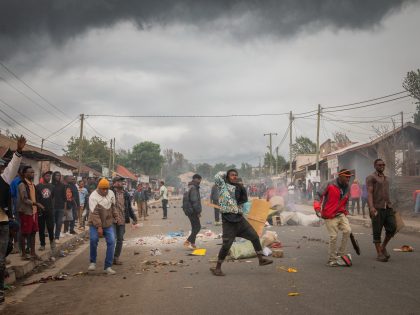Apartheid’s Revenge
The ethno-nationalism that marked apartheid’s dying days has now morphed into a malignant “nativism” that threatens post-apartheid democracy.

Jacob Zuma, President of South Africa, and Joseph Kabila, President of the DRC, (Government of South Africa Flickr CC).
For the third time in seven years, violence against immigrants has broken out across South Africa. Pogroms that began in late March in Durban, in KwaZulu-Natal Province, have now spread to Johannesburg. Since the end of apartheid in 1994, approximately five million immigrants have settled in South Africa; most are Africans from further north pursuing economic opportunity or refugees seeking the political stability of the continent’s most highly developed nation. Black South Africans, most of whom remain poor and marginalized in the post-apartheid era, have watched warily for years as networks of Malawians, Somalis, Ethiopians, Zimbabweans, Nigerians and Mozambicans have begun to build small businesses and take advantage of South Africa’s opportunities. Now those immigrant shops are being burned and their owners killed.
The most recent paroxysm of violence appears to have been prompted by derogatory remarks by the Zulu king, Goodwill Zwelithini, who demanded that foreigners leave the country, insinuating that they are “lice” and “ants.” The king has since issued a half-apology, saying his statements were taken out of context. Many of his subjects, though, took his words literally.
Two decades after its transition to democracy, South Africa is in a restive phase. The governing African National Congress has tried and failed to undo the legacy of centuries of white-minority rule. Many of its unfulfilled promises are a result of the country’s negotiated transition in the early 1990s, which saw the A.N.C. and other liberation movements abandon their most radical demands for economic and racial transformation in the name of stability and compromise.
The recent outbreak of xenophobic violence is a direct consequence of those compromises. Usually labeled a “miracle transition,” the early 1990s were actually a period of tremendous violence in KwaZulu-Natal and around Johannesburg. The unrest was fueled in part by the apartheid government’s efforts to sustain itself by promoting rivalries between the country’s “traditional” or tribal authorities and the nationalists affiliated with Nelson Mandela’s A.N.C.
The country was beset by ethnic and regional conflicts, emanating from the white minority and the various ethnically defined homelands that the apartheid government had created. King Zwelithini was the symbolic leader of the strongest of these, representing nearly 10 million Zulus, the largest ethnic group in South Africa. The king’s brand of ethnic chauvinism appealed especially to young, poor men. Along with KwaZulu’s chief minister, Mangosuthu Buthelezi, and the Inkatha Freedom Party, he repeatedly threatened to sabotage the landmark 1994 election. One of the A.N.C.’s triumphs was to co-opt these nationalist leaders into the new South Africa, without requiring them to give up their Zulu chauvinism.
Traditional leaders like King Zwelithini were put on the state’s payroll as part of a group called the Congress of Traditional Leaders of South Africa. This gave them new legitimacy and brought a measure of peace to KwaZulu-Natal — and eventually brought the province into the A.N.C. fold, but at a cost. It gave legitimacy to a form of ethno-nationalist politics that the A.N.C. had officially opposed during the anti-apartheid struggle.
In the interest of governing, the A.N.C. opened its ranks and offered support to a range of ethnic and regional interest groups, including elements of the former apartheid regime and traditional leaders. Mr. Zuma himself exploited Zulu nationalism in his own battle for the presidency.
The ethno-nationalism that marked apartheid’s dying days has now morphed into a malignant “nativism” that threatens post-apartheid democracy.
Mr. Zuma has not done much to address the crisis. He issued a soft condemnation a week after the first attacks started and offered migrants safe passage back to their native countries. He has since sent the military into the most restive areas, while criticizing the media for over-hyping the story. At no time has he criticized the Zulu king.
If Mr. Zuma wanted to offer concrete solutions, he would do well to look back to one of the most celebrated chapters in his own party’s history. In 1955, a variety of groups, led by the A.N.C., adopted the so-called Freedom Charter, which declared, “South Africa belongs to all who live in it.” The charter’s signatories included black Africans, descendants of slaves imported to the Cape Colony, laborers from South Asia and immigrants from Europe. The first post-apartheid Constitution, in 1996, enshrined the promise that the country belonged to all. Recent days have shown that there are limits to this promise.
For many poor blacks, the label “South African” and the accompanying right to be represented by a democratic government are the only reward they earned from long decades of struggle. During the negotiations to end apartheid rule, the idea that South Africa belonged only to “those who already lived in it” was one issue on which the white minority and the liberation movements already agreed. In their view, the struggle over apartheid was contested by South African nationals, and the nation belonged to those who had declared it for themselves during that struggle.
King Zwelithini and his supporters took a while to see the benefits of being counted as South African, rather than Zulu, but now some of them have seized on that identity with fervor and directed their anger against outsiders who have arrived since 1994. Despite the Constitution’s claims, the Freedom Charter apparently applies only to some, not all, who live in South Africa.
While Mr. Zuma has dithered, many South Africans have defended the charter’s ideals. Thousands of Zulus have taken to the streets of Durban to denounce xenophobia in their communities. Others have reminded South Africans that many immigrants come from countries — like Zimbabwe and Mozambique — that sheltered the A.N.C. during the struggle against apartheid.
The strongest condemnation of the violence has come from Mr. Zuma’s ex-wife, Nkosazana Dlamini-Zuma, now the chairwoman of the African Union. Ms. Dlamini-Zuma — a Zulu and an A.N.C. veteran — has been unequivocal in arguing that diversity is South Africa’s biggest strength, and must remain so.
As South Africa prepares for its next round of local elections, its citizens should heed Ms. Dlamini-Zuma’s words so that, one day, the country might actually belong to all who live in it.



















